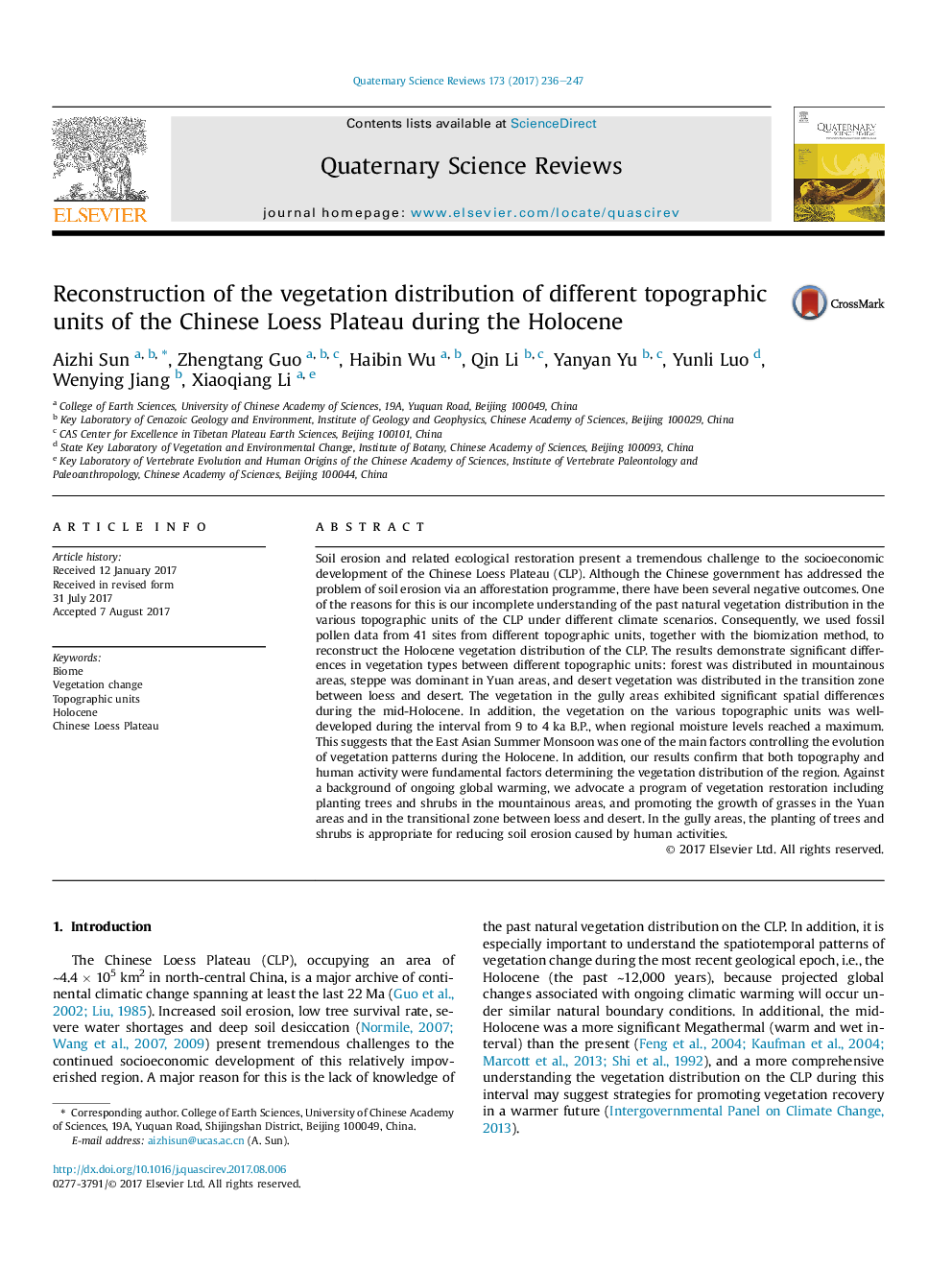| Article ID | Journal | Published Year | Pages | File Type |
|---|---|---|---|---|
| 5786517 | Quaternary Science Reviews | 2017 | 12 Pages |
Abstract
Soil erosion and related ecological restoration present a tremendous challenge to the socioeconomic development of the Chinese Loess Plateau (CLP). Although the Chinese government has addressed the problem of soil erosion via an afforestation programme, there have been several negative outcomes. One of the reasons for this is our incomplete understanding of the past natural vegetation distribution in the various topographic units of the CLP under different climate scenarios. Consequently, we used fossil pollen data from 41 sites from different topographic units, together with the biomization method, to reconstruct the Holocene vegetation distribution of the CLP. The results demonstrate significant differences in vegetation types between different topographic units: forest was distributed in mountainous areas, steppe was dominant in Yuan areas, and desert vegetation was distributed in the transition zone between loess and desert. The vegetation in the gully areas exhibited significant spatial differences during the mid-Holocene. In addition, the vegetation on the various topographic units was well-developed during the interval from 9 to 4 ka B.P., when regional moisture levels reached a maximum. This suggests that the East Asian Summer Monsoon was one of the main factors controlling the evolution of vegetation patterns during the Holocene. In addition, our results confirm that both topography and human activity were fundamental factors determining the vegetation distribution of the region. Against a background of ongoing global warming, we advocate a program of vegetation restoration including planting trees and shrubs in the mountainous areas, and promoting the growth of grasses in the Yuan areas and in the transitional zone between loess and desert. In the gully areas, the planting of trees and shrubs is appropriate for reducing soil erosion caused by human activities.
Related Topics
Physical Sciences and Engineering
Earth and Planetary Sciences
Geology
Authors
Aizhi Sun, Zhengtang Guo, Haibin Wu, Qin Li, Yanyan Yu, Yunli Luo, Wenying Jiang, Xiaoqiang Li,
